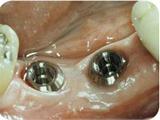Beijing Olympic Games boost the rise of electronic security patents in our country
Private Enterprise International Business Negotiation Conference
Top Korean Fashion Women's Wear Recruitment!
Open the First Super Profitable Small Shop in China
Peak Dialogue of Venture Capitalists
InvestChina Investment in China
Security is one of the globally emerging electronic pillar industries. For example, the global security industry market size reached $138 billion in 2006 and is expected to exceed $201 billion by 2008. The vast majority of this consists of design, procurement, and operation costs for security electronics. The mainland of our country is the world's second-largest security industry base after the United States. However, we lead globally in the global shipment volume of major security electronic components. Our country's security electronic technology is rapidly rising and is expected to surpass the United States in the near future, becoming a new technological leader in the global security industry.
The suppliers of these products include both world-class enterprises rooted in the Chinese market and a large number of local small and medium-sized enterprises with high-tech capabilities. For instance, Beijing Panasonic Electric was the AV supplier for large venues such as the Bird's Nest, the International Broadcast Center, the Olympic Fencing Hall, the Laoshan Cycling Venue, and the Tianjin Olympic Center Stadium. The custom-made emergency command vehicle developed domestically for the Beijing Olympics will undertake on-site emergency command functions at the Olympic Games. Its video surveillance system requires reliability, stability, fast response, and the ability to detect emergencies in the first instance while preserving full video recordings after an incident. The vehicle is also equipped with a mobile GSM/GPS monitoring and alarm system for risk situation monitoring and command. Furthermore, the "Weiba Long" robot used in the Beijing Olympics mainly serves to defuse explosives, inspect and handle nuclear radioactive hazardous materials, and rescue hostages. In addition to remote wireless control, the robot's working arm can rotate continuously in both directions by 360 degrees, has a maximum extension distance of 3.5 meters, and can carry a load of 150 kilograms. The "Weiba Long" robot is equipped with four color all-directional monitoring cameras responsible for risk situation monitoring and emergency handling. Moreover, tens of thousands of cameras and related data collection, analysis, and processing systems have been installed in important facilities such as Beijing Olympic venues and subways.
From the perspective of patent deployment related to products and technologies, our country already possesses strong patent capabilities in the field of electronic security; the Beijing Olympics will further promote the global rise of patents in our country's electronic security industry. AV security technology. For example, document No. 200410047462.5 involves an information providing device, an information receiving device, and their storage media. It consists of a synchronization part that synchronizes AV data streams with metadata and a packaging part that packages AV data streams and metadata for each unit of metadata. By reconstituting metadata for each unit and packaging it together with the AV data stream, it can execute part of the metadata, allocate segments as part of the AV data stream, increase response speed, reduce necessary storage capacity, and minimize network congestion. Document No. 200410054600.2 involves an information recording medium and a device and method for recording or reproducing data. It is an information recording medium suitable for optical discs like DVD-RAM, provided for overall management of target data for different AV formats. The device is also used for recording data and playing media. The media stores management information, which includes program chain information for defining the playback order of targets and target information containing information related to the targets. The target information has general information about the target, attribute information, and mapping that relates the playback time points of the target to the address of the target component on the optical disc. PGC information contains cell information, which includes information about the type of target and identification information. The order of cell information in the PGC information corresponds to the order in which the target is played back.
For instance, document No. 02809862.5 involves a stream transformation method and device, related data recording method and device, and data recording medium. To encode the externally input AV signal into MPEG-TS that can be quickly transformed from MPEG-TS to MPEG-PS, define data units (multiplexing units), where data units include multiple data packets and have a data size corresponding to one data packet in MPEG-PS, and encode MPEG-TS for each defined data unit. Additionally, the time stamp information (ATS) added to the MPEG-TS data packet transformed into MPEG-TS and the time stamp information (SCR) added to the MPEG-PS data packet transformed are related to a predetermined formula. Document No. 200410042469.8 involves an AV synchronization system. When the flow used as the main reference stops, pre-register the priority of the main reference, consider the correction cycle of the system clock or the previous error, or send a stream containing information about the main reference, allowing other processes to be used as the main reference. Therefore, it provides a synchronization method that can maintain system clock correction. When the correction error is large, gradual correction or reference can give a normal feeling. Additionally, when the correction error is small, omitting correction or reference can reduce system overhead.
A mobile GSM/GPS communication system for emergency monitoring and command. For example, document No. 03108583.0 involves a GSM anti-theft alarm system. It uses GSM network technology to develop GSM positioning technology, introducing GSM mobile positioning technology into vehicle anti-theft systems to report the location of lost vehicles at any time. Using this technology, along with alarm sensors, it can detect and alarm unauthorized use of vehicles. Document No. 03140347.6 involves a GSM positioning anti-theft system. This system includes a central processor, a GSM communication module connected to the central processor for communication and positioning, an alarm control circuit, an alarm voice circuit, and a decoding circuit connected to the central processor, an alarm sensor connected to the alarm control circuit, a microphone and RF amplification circuit connected to the GSM communication module, and an antenna connected to the RF amplification circuit. The alarm voice circuit is also connected to the GSM communication module to send audio signals to the GSM communication module. The decoding circuit translates the instruction code sent by the owner to this system into a code recognizable by the central processor. Its GSM positioning anti-theft system enables human-vehicle dialogue, accurate positioning, intelligent anti-theft, and effectively prevents robbery.
For example, document No. 200410040423.2 involves a vehicle-mounted GSM phone intelligent anti-theft system. It combines surveillance, image temporary storage, image transmission, voice alarm, and language-initiated anti-robbery functions into a vehicle-mounted GSM phone intelligent anti-theft system. It consists of a monitoring device, monitoring device, monitoring device, monitoring device, anti-theft system host, radar detection device, external detection connection, system speaker, external control connection, system microphone, antenna, and hands-free interface for mobile phones. Its cost is relatively low, enabling timely recording of useful sound and image information inside the vehicle after an alert occurs and sending it via multimedia message to the owner's pre-set mobile phone, while also storing this information. Document No. 200610131700.X involves a proactive safety prevention method and vehicle terminal for rental cars. It integrates GPS technology, GSM technology, and IC card technology for rental vehicle management; receives GPS satellite positioning data and vehicle status information, converts the data into protocol format, and transmits the information back to the center through the GSM network. Receives commands issued by the center to implement vehicle monitoring, listening, cutting off fuel and electricity, parameter modification, etc. A set of GPS vehicle terminals and matching IC card systems is installed in each rental vehicle, recording the rental time and other information on the IC card. Once the time expires, the renter must return the car or renew the lease; otherwise, the vehicle cannot start normally.
Additionally, document No. 03127645.8 involves a vehicle travel recorder. It consists of a microcontroller MCU, USB interface, large-capacity storage, and a satellite positioning receiver module, among others. The serial port of the MCU connects to the corresponding port of the RS232 interface circuit, and the GPS antenna connects to the RF signal of the GPS module. The received positioning and status information is transmitted through the signal sending serial port TX and receiving serial port RX of the GPS module to the corresponding ports of the RS232 interface circuit. After processing the received signals, the MCU transmits data using the USB data bus and connects to the upper-level machine interface through the USB interface circuit to complete the transmission of position and status information during vehicle travel. Document No. 03127643.1 involves an integrated satellite positioning vehicle terminal. The antenna RF of the satellite positioning device connects through the signal sending serial port and receiving serial port of the GPS module to the interface circuit, and the serial port of the central processor connects to the interface circuit, transmitting the received positioning and status information to the central processor. The antenna RF connects through the signal sending serial port and receiving serial port of the GSM module to the corresponding ports of the RS232 interface circuit, and the serial port P3.2 of the central processor CPU connects to the corresponding ports of the RS232 interface circuit, exchanging information with the mobile SMS center, completing real-time monitoring of the controlled vehicle. The data port of the central processor CPU connects through a latch to the program memory ROM and data memory RAM, completing program storage and data storage. This device receives satellite positioning data and vehicle status information, converts the data into protocol format, and transmits it back to the center in short message form through the GSM network.
Facial recognition technology. For example, document No. 200410058518.7 involves instant messaging status and identity management technology. First, a device such as a camera captures still images, video, and/or audio data. Then, relevant information is extracted and analyzed from the captured data. Known technologies (such as facial recognition, face tracking, and motion detection) can be used to extract and analyze data. Then, this information is interpreted for IM applications and provided to the application programming interface (API) of the IM application. The API can use the information for various purposes, including updating the user's status (e.g., available, busy, on the phone, away) and updating the user's identity. Document No. 200410047919.2 involves a method for normalizing the attributes of face image acquisition devices. Cameras, digital cameras, and digital cameras acquire N face images respectively and convert them into grayscale images. The N face images are trained, calculating the distribution function of pattern class centers, obtaining cumulative maps of pattern class centers for each face image acquisition device. Standard equipment and equipment to be converted are specified. Histogram statistics are performed on a face image acquired by the equipment to be converted, obtaining the cumulative map of the histogram of the image. The gray level order number of each pixel point in the face image acquired by the equipment to be converted is calculated, and its pixel gray value is reassigned, forming a transition image. The face image acquired by the equipment to be converted and the aforementioned transition image are fused at the pixel level, ultimately forming a normalized image of the acquisition equipment attributes. It can improve the recognition rate of face images acquired by different acquisition devices for face recognition.
Furthermore, document No. 200410101879.5 involves a face recognition method based on statistical texture analysis. It combines face recognition technology, pattern recognition, image processing technology, and statistical learning technology, proposing a completely new texture analysis method. First, the object to be analyzed is decomposed into multiple partially overlapping sub-objects. Then, multi-scale morphological wavelets are used to perform "structure element" analysis and extraction on the sub-objects to be analyzed at different scales. Statistical methods are used to classify patterns for each sub-object, generating a weak classifier for each sub-object. Finally, Bayesian networks are used to model the relationships between weak classifiers. Document No. 200710178088.6 involves a live detection method and system based on physiological movements of the face. It belongs to the field of face recognition technology, and its method includes steps: A) Detecting the motion region and direction of objects within the camera view of the detection system, locking the face detection result frame; B) Determining whether there is effective facial motion within the face detection result frame. If not, it is considered a photo face. If yes, proceed to step C; C) Determining whether the facial motion within the face detection result frame is physiological motion. If not, it is considered a photo face. If yes, it is considered a real face. Its system includes: a motion detection module, an effective facial motion judgment module, and a physiological motion judgment module, Yueyang gasoline prices. EIP security technology. It mainly covers video surveillance systems, access control and alarm systems, intelligent fire alarm systems, baggage inspection systems, explosive and drug detection systems. For example, document No. 200410060724.1 involves a bus alarm system, primarily consisting of an alarm light, which is set on the top of the compartment. An alarm switch box is placed behind the seats inside the compartment, with an alarm switch inside the switch box. The alarm switch is connected through wires to the alarm light and the alarm mobile phone. The alarm switch adopts a double-pole double-throw switch. This device, due to the installation of an alarm switch inside the compartment, can be pressed in case of an emergency, causing the external alarm light to flash as a warning; the alarm switch is connected to the alarm mobile phone, which can also issue an alarm signal through the mobile phone. Document No. 02828037.7 involves a system and method for electronic processing of import/export goods and/or passengers and baggage at security checkpoints. It includes a database containing data records associated with each foreign-origin package or individual. Associated with the database is a processor with a search engine for searching data records based on user-selected conditions. This system allows users to store annotations made during inspections, enabling the electronic archiving of information related to inspections.
Furthermore, document No. 200420035735.X involves a storage device for luggage safety inspection media. It includes a suitcase simultaneously configured with a combination lock and a key lock, with a box mounted on it. The box contains the required accommodation space and is preset with a lock that can be opened with a key. The key is only provided by the manufacturer to the security personnel as the master key. Inside the accommodation space, at least the correct unlocking number of the suitcase combination lock and the key to open the suitcase key lock are pre-placed. Document No. 200410030742.5 involves a chemical marking of non-volatile explosives, explosives, and packaging materials with 2,3-dinitro-2,3-dimethylbutane. Adding a certain amount of 2,3-dinitro-2,3-dimethylbutane (DMNB) chemical marker to ammonium nitrate, ammonium nitrate-based explosives, nitrates, chlorates, perchlorates, and other non-volatile oxidizer explosives, as well as paper used to produce electric detonators, fireworks, and firecrackers, allows modern security equipment like GC-MS to easily detect these items.
In addition, document No. 200510086236.2 involves an electrochemical rapid detection method for ultra-trace aromatic explosive nitro compounds, particularly involving the use of silica-modified working electrodes in electrochemical voltammetry to achieve rapid electrochemical detection of ultra-trace aromatic explosive nitro compounds. It focuses on the discovery of the electrochemical sensitivity of silica to aromatic explosive nitro compounds and the application of electrochemical voltammetry with sensitive material-modified working electrodes in ultra-trace aromatic explosive nitro compound rapid detection technology. It simplifies the detection device for aromatic explosive nitro compounds. Through the adsorption effect of silica materials on aromatic explosive nitro compounds in electrolyte solutions or gases, the detection process can be completed quickly, making the detection process instantaneous. Document No. 200620137911.X involves an LED explosion-proof security lamp, including a housing, a light source lamp, a lamp cover, a glass panel, a circuit board, and lithium-ion batteries, charging plugs, etc., inside the housing. The light source lamp is an LED light source lamp, with a focusing lens installed at the front of the LED light source lamp, and a reflector heat sink installed between the LED light source lamp and the lamp cover, with a reflective layer coated inside. A main switch and a touch switch are installed on the housing. The main switch includes two brightness conversion gears, with a current-limiting resistor R connected in one gear’s circuit. Screw



